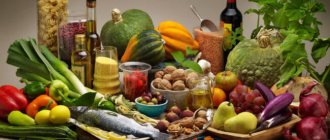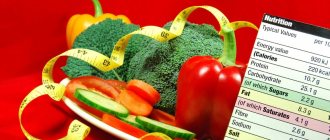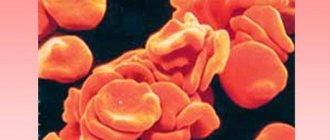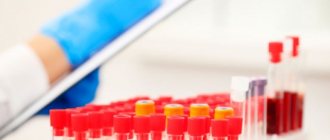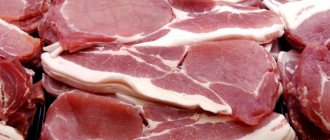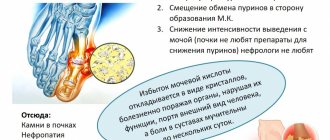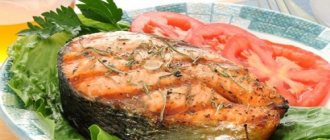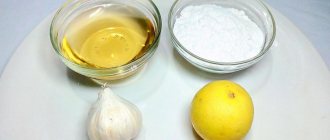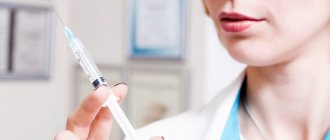Along with taking medications such as statins, experts recommend eating healthy foods every day to reduce cholesterol in the blood. But not many people know which foods increase cholesterol and which, on the contrary, help lower cholesterol levels.
Healthy food that cleanses blood vessels from atherosclerotic deposits can be consumed in its pure form. Various herbal infusions, teas and decoctions are also used. Today we will talk about which foods increase cholesterol and which lower it, as well as how to eat properly if the results of blood tests are outside the normal range.
To lower the level of bad cholesterol in the blood, it is necessary to develop a daily menu that includes a set of products that help cleanse blood vessels. It is better to do this together with a nutritionist, especially if you are prone to excess weight, hypertension and other health problems. The doctor will take into account all the important points and recommend products that are useful for a particular patient.
It is recommended to consume 50–60% complex carbohydrates from all food daily. These include foods that give a long-lasting feeling of fullness. This includes oatmeal, vegetables and fruits, whole grain bread, and cereal-based cereals. Fruit and vegetable salads are considered types of food that lower cholesterol levels, cleanse blood vessels, and give them tone and elasticity.
It is important to eat small meals. Eating small meals up to 5-6 times a day is healthier than eating too much 1-2 times a day. This way the gastrointestinal tract is unloaded, all the beneficial substances from food have time to be absorbed, and the person constantly feels full. If you suddenly feel hungry, you can satisfy it by drinking a glass of low-fat kefir or homemade yogurt.
It is worth considering the impact of bad habits on blood cholesterol levels. For example, smoking cigarettes has a negative impact on the condition of the body in general, and in particular on the condition of blood vessels. The risk of atherosclerosis increases, metabolism slows down, and the rate of cholesterol removal from the circulatory system decreases.
Alcohol is another enemy of people with high cholesterol levels. There is a theory that drinking dry wine helps strengthen capillaries, but daily consumption of 200–300 ml of this drink clearly does more harm to the body than good.
Competition "bio/mol/text"-2012
This article was submitted to the competition of popular science works “bio/mol/text”-2012 in the “Best Review” category.
The competition is sponsored by the visionary Thermo Fisher Scientific.
So, the history of the issue is as follows. A long time ago, in one thousand nine hundred and thirteen, the St. Petersburg physiologist Nikolai Aleksandrovich Anichkov showed that nothing more than cholesterol causes atherosclerosis in experimental rabbits kept on food of animal origin [1]. In general, cholesterol is necessary for the normal functioning of animal cells and is the main component of cell membranes, and also serves as a substrate for the synthesis of steroid hormones and bile acids.
The role of cholesterol in the functioning of biomembranes is described in some detail in the article “The Lipid Foundation of Life” [12]. - Ed.
The main lipid component of dietary fat and body fat is triglycerides, which are esters of glycerol and fatty acids. Cholesterol and triglycerides, being non-polar lipid substances, are transported in the blood plasma as part of lipoprotein particles. These particles are divided according to size, density, relative content of cholesterol, triglycerides and proteins into five large classes: chylomicrons, very low density lipoproteins (VLDL), intermediate density lipoproteins (IDL), low density lipoproteins (LDL) and high density lipoproteins (HDL). [2]. Traditionally, LDL is considered the “bad” cholesterol, and HDL is the “good” cholesterol (Figure 1).
Figure 1. “Bad” and “good” cholesterol. Participation of various lipoprotein particles in the transport of lipids and cholesterol.
Schematically, the structure of a lipoprotein includes a nonpolar core, consisting mostly of cholesterol and triglycerides, and a shell of phospholipids and apoproteins (Fig. 2). The core is the functional cargo that is delivered to its destination. The membrane is involved in the recognition of lipoprotein particles by cellular receptors, as well as in the exchange of lipid parts between various lipoproteins [3].
Figure 2. Schematic structure of a lipoprotein particle
The balance of cholesterol levels in the body is achieved by the following processes: intracellular synthesis, uptake from plasma (mainly from LDL), exit from the cell into plasma (mainly as part of HDL). The precursor to steroid synthesis is acetyl coenzyme A (CoA). The synthesis process involves at least 21 steps, starting with the sequential conversion of acetoacetyl CoA. The rate-limiting stage of cholesterol synthesis is largely determined by the amount of cholesterol absorbed in the intestine and transported to the liver [4]. With a lack of cholesterol, a compensatory increase in its uptake and synthesis occurs.
Nuts
All types of nuts are an excellent source of healthy saturated fats. Essential fatty acids omega-3 and omega-6 prevent the occurrence of atherosclerotic changes in blood vessels. Almonds and cashews contain magnesium, which increases the elasticity of blood vessels and helps dissolve plaques. In addition, most nuts contain flavonoid pigments - special plant compounds that help strengthen arterial walls. Peanuts, tree nuts and almonds help avoid fatty liver disease, as a result of which its function is normalized.
Please note that if cholesterol increases, nuts should be eaten unprocessed, since high temperatures destroy the beneficial substances in them.
Cholesterol transport
The lipid transport system can be divided into two large parts: external and internal.
The external pathway begins with the absorption of cholesterol and triglycerides in the intestine. Its end result is the delivery of triglycerides to adipose tissue and muscles, and cholesterol to the liver. In the intestine, dietary cholesterol and triglycerides bind to apoproteins and phospholipids, forming chylomicrons, which enter the plasma, muscle and adipose tissue through the lymph flow. Here, chylomicrons interact with lipoprotein lipase, an enzyme that releases fatty acids. These fatty acids enter fat and muscle tissue for storage and oxidation, respectively. After removal of the triglyceride core, the residual chylomicrons contain large amounts of cholesterol and apoprotein E. Apoprotein E specifically binds to its receptor in liver cells, after which the residual chylomicrons are captured and catabolized in lysosomes. As a result of this process, cholesterol is released, which is then converted into bile acids and excreted or participates in the formation of new lipoproteins formed in the liver (VLDL). Under normal conditions, chylomicrons are present in plasma for 1–5 hours after ingestion [2], [3].
Inner path. The liver constantly synthesizes triglycerides, utilizing free fatty acids and carbohydrates. As part of the lipid core of VLDL, they enter the blood. The intracellular process of formation of these particles is similar to that of chylomicrons, with the exception of differences in apoproteins. Subsequent interaction of VLDL with lipoprotein lipase in tissue capillaries leads to the formation of residual cholesterol-rich VLDL (RCL). Approximately half of these particles are removed from the bloodstream by liver cells within 2–6 hours. The rest undergo modification with the replacement of the remaining triglycerides with cholesterol esters and the release of all apoproteins, with the exception of apoprotein B. As a result, LDL is formed, which contains ¾ of all plasma cholesterol. Their main function is the delivery of cholesterol to the cells of the adrenal glands, skeletal muscles, lymphocytes, gonads and kidneys [3]. Modified LDL (oxidized products, the amount of which increases with increased levels of reactive oxygen species in the body, so-called oxidative stress) can be recognized by the immune system as unwanted elements. Then macrophages capture them and remove them from the body in the form of HDL. When LDL levels are excessively high, macrophages become overloaded with lipid particles and lodge in the artery walls, forming atherosclerotic plaques.
The main transport functions of lipoproteins are shown in the table.
Table. Functions of lipoproteins [5].
| Class | Dimensions | Function |
| HDL | 4–14 nm | Transport of cholesterol from peripheral tissues to the liver |
| LDL | 20–22.5 nm | Transport of cholesterol, triglycerides and phospholipids from the liver to peripheral tissues |
| BOB | 25–35 nm | Transport of cholesterol, triglycerides and phospholipids from the liver to peripheral tissues |
| VLDL | 30–80 nm | Transport of cholesterol, triglycerides and phospholipids from the liver to peripheral tissues |
| Chylomicrons | 75–1200 nm | Transport of dietary cholesterol and fatty acids from the intestine to peripheral tissues and the liver |
Useful tips
With high cholesterol levels, the composition of the products and the method of preparation are important:
- First meal. Rich, spicy soups, fatty meat broths, fried vegetables are excluded from the menu. Preference is given to light vegetable, fish or chicken broths. Poultry meat is cooked without skin, removing excess fat. It is not recommended to season ready-made dishes with sour cream or mayonnaise.
- Second courses. Fried potatoes, pilaf, navy-style pasta, fast food - everything fatty and fried is strictly prohibited. The best option is side dishes made from cereals, boiled or stewed vegetables.
- Beverages. It is undesirable to drink tea, coffee, cocoa with added cream. Alcohol is completely excluded. It is most beneficial to drink green or ginger tea with honey, mineral water, and juices.
The optimal amount of daily cholesterol intake is about 300 mg.
The information below will help you create a menu correctly.
Cholesterol regulation
Blood cholesterol levels are largely determined by diet. Dietary fiber lowers cholesterol levels, and food of animal origin increases its content in the blood.
One of the main regulators of cholesterol metabolism is the LXR receptor (Fig. 3). LXR α and β belong to a family of nuclear receptors that form heterodimers with the retinoid X receptor and activate target genes. Their natural ligands are oxysterols (oxidized derivatives of cholesterol). Both isoforms are 80% identical in amino acid sequence. LXR-α is found in the liver, intestines, kidneys, spleen, and adipose tissue; LXR-β is found ubiquitously in small amounts [6]. The metabolic pathway of oxysterols is faster than that of cholesterol, and therefore their concentrations better reflect the short-term balance of cholesterol in the body. There are only three sources of oxysterols: enzymatic reactions, non-enzymatic oxidation of cholesterol and dietary intake. Non-enzymatic sources of oxysterols are usually minor, but in pathological conditions their contribution increases (oxidative stress, atherosclerosis), and oxysterols can act along with other products of lipid peroxidation [6]. The main effect of LXR on cholesterol metabolism: reuptake and transport to the liver, excretion in bile, decreased intestinal absorption. The level of LXR production varies throughout the aorta; in the arc, the turbulence zone, LXR is 5 times less than in areas with stable flow. In healthy arteries, increased LXR expression in the high-flow zone has an antiatherogenic effect [7].
Figure 3. Involvement of the LXR receptor in hepatic cholesterol metabolism.
Nuclear receptors as drug targets for metabolic disease
The scavenger receptor SR-BI plays an important role in the metabolism of cholesterol and steroids (Fig. 4). It was discovered in 1996 as a receptor for HDL [8]. In the liver, SR-BI is responsible for the selective uptake of cholesterol from HDL. In the adrenal glands, SR-BI mediates the selective uptake of esterified cholesterol from HDL, which is required for glucocorticoid synthesis. In macrophages, SR-BI binds cholesterol, which is the first step in reverse cholesterol transport. SR-BI also takes up cholesterol from plasma and mediates its direct release into the intestine [9].
Figure 4. Involvement of the SR-BI receptor in cholesterol metabolism
Scavenger receptor BI: A multi-purpose player in cholesterol and steroid metabolism
Polyphenols in berries and fruits for patients with atherosclerosis
Polyphenols are substances that help normalize lipoprotein levels. Polyphenols are found in berries and fruits.
The most beneficial substances are contained in the following products:
- pomegranate;
- blueberry;
- red grapes;
- cranberry;
- raspberries;
- apples.
Products containing polyphenols must be consumed regularly, only then can they normalize cholesterol levels.
In order to get the maximum amount of polyphenols from berries and fruits, you need to know how to eat and cook them correctly.
Rules of use:
- avoid heat treatment;
- eat fresh, unpeeled;
- do not add sugar to juices;
Products should be added to the menu regularly throughout the day. A person needs 100 mg of polyphenols per day.
Removing cholesterol from the body
The classic route of cholesterol elimination is cholesterol transport from the periphery to the liver (HDL), uptake by liver cells (SR-BI), excretion into bile and excretion through the intestine, where most of the cholesterol is returned to the blood [10].
The main function of HDL is the reverse transport of cholesterol to the liver. Plasma HDL is the result of a complex of different metabolic events. The composition of HDL varies greatly in density, physicochemical properties and biological activity. These are spherical or disc-shaped formations. Disc-shaped HDL is mainly composed of apoprotein AI with an embedded layer of phospholipids and free cholesterol. Spherical HDL is larger and additionally contains a hydrophobic core of cholesteryl esters and small amounts of triglycerides.
In metabolic syndrome, the exchange of triglycerides and cholesterol esters between HDL and triglyceride-rich lipoproteins is activated. As a result, the content of triglycerides in HDL increases, and cholesterol decreases (i.e., cholesterol is not excreted from the body) [11]. The absence of HDL in humans occurs in Tangier disease, the main clinical manifestations of which are enlarged orange tonsils, corneal arch, infiltration of bone marrow and mucosal layer of the intestine [3].
To briefly summarize, it is not cholesterol itself that is scary, which is a necessary component that ensures the normal structure of cell membranes and the transport of lipids in the blood, but in addition it is a raw material for the production of steroid hormones. Metabolic disorders manifest themselves when the balance of LDL and HDL is disturbed, which reflects a disruption of the lipoprotein transport system, including liver function, bile formation and the participation of macrophages. Therefore, any liver diseases, as well as autoimmune processes, can cause the development of atherosclerosis, even with a vegetarian diet. If we return to the original experiments of N.A. Anichkov on feeding rabbits with food rich in cholesterol, we will see that cholesterol is not found in the natural diet of rabbits and therefore, like a poison, disrupts the functioning of the liver, causes severe inflammation of blood vessels and, as a result, the formation of plaques.
Restoring this balance artificially (for example, at the molecular level using nanoparticles) will someday become the main method of treating atherosclerosis (see “Nanoparticles for “bad” cholesterol!” [13]). - Ed.
Fully or partially limited products
Excludes:
- baked goods, puff pastry and pastry products, cakes, cream pies;
- offal, fatty pork, duck, goose, cooking fats, smoked meats and sausages;
- all types of broths, fried foods, canned fish and caviar;
- fatty cottage cheese, sour cream, cheese and cream;
- chocolate, ice cream, cocoa, strong tea and coffee;
- white rice, pasta, semolina.
Table of prohibited products
| Proteins, g | Fats, g | Carbohydrates, g | Calories, kcal | |
Vegetables and greens | ||||
| radish | 1,2 | 0,1 | 3,4 | 19 |
| white radish | 1,4 | 0,0 | 4,1 | 21 |
| red radish | 1,2 | 0,1 | 3,4 | 20 |
| black radish | 1,9 | 0,2 | 6,7 | 35 |
| spinach | 2,9 | 0,3 | 2,0 | 22 |
| sorrel | 1,5 | 0,3 | 2,9 | 19 |
Fruits | ||||
| bananas | 1,5 | 0,2 | 21,8 | 95 |
Berries | ||||
| grape | 0,6 | 0,2 | 16,8 | 65 |
Mushrooms | ||||
| mushrooms | 3,5 | 2,0 | 2,5 | 30 |
Nuts and dried fruits | ||||
| raisin | 2,9 | 0,6 | 66,0 | 264 |
Cereals and porridges | ||||
| semolina | 10,3 | 1,0 | 73,3 | 328 |
| white rice | 6,7 | 0,7 | 78,9 | 344 |
Flour and pasta | ||||
| pasta | 10,4 | 1,1 | 69,7 | 337 |
Confectionery | ||||
| jam | 0,3 | 0,2 | 63,0 | 263 |
| jam | 0,3 | 0,1 | 56,0 | 238 |
| candies | 4,3 | 19,8 | 67,5 | 453 |
| pastry cream | 0,2 | 26,0 | 16,5 | 300 |
| cookie | 7,5 | 11,8 | 74,9 | 417 |
Ice cream | ||||
| ice cream | 3,7 | 6,9 | 22,1 | 189 |
Cakes | ||||
| cake | 4,4 | 23,4 | 45,2 | 407 |
Chocolate | ||||
| chocolate | 5,4 | 35,3 | 56,5 | 544 |
Raw materials and seasonings | ||||
| mustard | 5,7 | 6,4 | 22,0 | 162 |
| mayonnaise | 2,4 | 67,0 | 3,9 | 627 |
Dairy | ||||
| milk 3.6% | 2,8 | 3,6 | 4,7 | 62 |
| milk 4.5% | 3,1 | 4,5 | 4,7 | 72 |
| cream | 2,8 | 20,0 | 3,7 | 205 |
| sour cream 25% (classic) | 2,6 | 25,0 | 2,5 | 248 |
Cheeses and cottage cheese | ||||
| cheese | 24,1 | 29,5 | 0,3 | 363 |
| cottage cheese 11% | 16,0 | 11,0 | 1,0 | 170 |
| cottage cheese 18% (fat) | 14,0 | 18,0 | 2,8 | 232 |
Meat products | ||||
| pork | 16,0 | 21,6 | 0,0 | 259 |
| pork liver | 18,8 | 3,6 | 0,0 | 108 |
| pork kidneys | 13,0 | 3,1 | 0,0 | 80 |
| pork fat | 1,4 | 92,8 | 0,0 | 841 |
| salo | 2,4 | 89,0 | 0,0 | 797 |
| beef liver | 17,4 | 3,1 | 0,0 | 98 |
| beef kidneys | 12,5 | 1,8 | 0,0 | 66 |
| beef brains | 9,5 | 9,5 | 0,0 | 124 |
Sausages | ||||
| smoked sausage | 16,2 | 44,6 | 0,0 | 466 |
| smoked sausage | 9,9 | 63,2 | 0,3 | 608 |
| sausages | 10,1 | 31,6 | 1,9 | 332 |
| sausages | 12,3 | 25,3 | 0,0 | 277 |
Bird | ||||
| smoked chicken | 27,5 | 8,2 | 0,0 | 184 |
| duck | 16,5 | 61,2 | 0,0 | 346 |
| smoked duck | 19,0 | 28,4 | 0,0 | 337 |
| goose | 16,1 | 33,3 | 0,0 | 364 |
Fish and seafood | ||||
| smoked fish | 26,8 | 9,9 | 0,0 | 196 |
| salted fish | 19,2 | 2,0 | 0,0 | 190 |
| Red caviar | 32,0 | 15,0 | 0,0 | 263 |
| black caviar | 28,0 | 9,7 | 0,0 | 203 |
| canned fish | 17,5 | 2,0 | 0,0 | 88 |
| cod (liver in oil) | 4,2 | 65,7 | 1,2 | 613 |
Oils and fats | ||||
| animal fat | 0,0 | 99,7 | 0,0 | 897 |
| cooking fat | 0,0 | 99,7 | 0,0 | 897 |
Non-alcoholic drinks | ||||
| instant coffee dry | 15,0 | 3,5 | 0,0 | 94 |
| black tea | 20,0 | 5,1 | 6,9 | 152 |
| * data is per 100 g of product | ||||
Literature
- Anitschkow N. and Chalatow S. (1983). Classics in arteriosclerosis research: On experimental cholesterin steatosis and its significance in the origin of some pathological processes by N. Anitschkow and S. Chalatow, translated by Mary Z. Pelias, 1913. Arteriosclerosis, Thrombosis, and Vascular Biology
.
3 , 178-182; - Klimov A.N. Causes and conditions for the development of atherosclerosis. Preventive cardiology. M.: “Medicine”, 1977. - 260–321 pp.;
- Cox RA and Garcia-Palmieri MR Cholesterol, triglycerides, and associated lipoproteins. Clinical methods: the history, physical, and laboratory examinations (3rd Edition). Boston: Butterworths, 1990. - 153–160 p.;
- Grundy S. M. (1978). Cholesterol metabolism in man. West. J. Med. 128, 13–25;
- Wikipedia: “Lipoproteins”;
- Wójcicka G., Jamroz-Wisniewska A., Horoszewicz K., Beltowski J. (2007). Liver X receptors (LXRs). Part I: Structure, function, regulation of activity, and role in lipid metabolism. Postepy Hig. Med. Dosw. 61, 736–759;
- Calkin A. and Tontonoz P. (2010). Liver X Receptor signaling pathways and atherosclerosis. Arterioscler. Thromb. Vasc. Biol. 30, 1513–1518;
- S. Acton, A. Rigotti, K. T. Landschulz, S. Xu, H. H. Hobbs, M. Krieger. (1996). Identification of Scavenger Receptor SR-BI as a High Density Lipoprotein Receptor. Science
.
271 , 518-520; - Vrins C. L. J. (2010). From blood to gut: Direct secretion of cholesterol via transintestinal cholesterol efflux. World J. Gastroenterol. 16, 5953–5957;
- Van der Velde A. E. (2010). Reverse cholesterol transport: From classical view to new insights. World J. Gastroenterol. 16, 5908–5915;
- Wilfried Le Goff, Maryse Guerin, M.John Chapman. (2004). Pharmacological modulation of cholesteryl ester transfer protein, a new therapeutic target in atherogenic dyslipidemia. Pharmacology & Therapeutics
.
101 , 17-38; - Lipid foundation of life;
- Nanoparticles for “bad” cholesterol!
Cholesterol-free diet recipes
First meal
Light soup made from mixed vegetables
Green peas, potatoes, zucchini, carrots, onions, bell peppers, green beans.
Place chopped potatoes, bay leaves, beans, carrots and allspice into boiling water. After 8-10 minutes, add chopped onion, bell pepper and zucchini. Cook until the vegetables are ready.
Brussels sprouts soup with sweet peppers
Cabbage, potatoes, tomatoes, red peppers, onions.
Cut all the vegetables into cubes; the cabbage can be left whole if the heads are small. Bring the vegetable broth to a boil, add the prepared vegetables, except cabbage, to it. Add a little salt, bay leaf and nutmeg. Boil for 10-15 minutes and add Brussels sprouts.
Roast red lentils
Lentils, garlic, onions, paprika, turmeric, vegetable oil, pepper, cumin, tomatoes or tomato paste.
Boil the lentils until pureed. Place on a sieve, do not pour out the broth. Grate the onion, add 2 cloves of chopped garlic, 0.5 tsp of cumin, turmeric, paprika, coriander, black pepper, chopped peeled tomatoes. Mix everything with lentil puree and, if you need to boil it, simmer everything together for 10 minutes, adding vegetable oil at the end.
Cauliflower and eggplant stew
Cauliflower, eggplant, carrots, tomatoes, onions, garlic, spices, vegetable oil, herbs.
Cut the eggplants into cubes and add a little salt. After a while, squeeze out the bitterness and rinse them. Place chopped cauliflower, eggplant and carrots in a saucepan, add a little water and simmer covered for 10 minutes. Add spices to taste, chopped tomatoes, vegetable oil and continue to simmer until done.
Salads
Avocado salad with homemade cheese
Avocado, apple, low-fat homemade cheese, lemon juice, olive oil.
Cut the avocado, apple and cheese as desired. For the dressing, mix lemon juice, olive oil and a little mustard.
Salad with red beans and cucumbers
Boiled beans, onion, cucumber, red bell pepper, garlic, olive oil, lemon juice, black pepper, any spices to your taste.
Cut the pepper, onion and cucumber into strips, add the prepared beans. For dressing, mix 1 tsp. lemon juice, salt, pepper, olive oil, garlic squeezed through a press.
